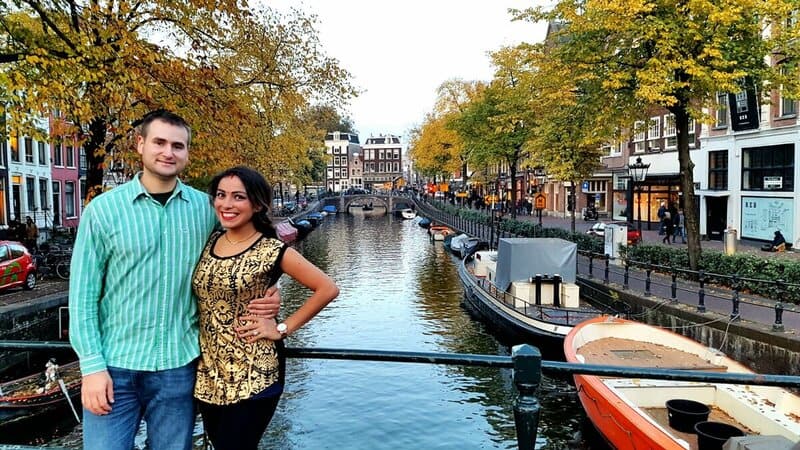Amsterdam is one of the most visited cities in the world. The vibrant Dutch capital sees millions of tourists each year, almost to the point where there are just too many. So what is everyone coming to see? Just what exactly is Amsterdam known for?
We will answer these important questions in this article on 17 things that Amsterdam is known for. If you’re considering a trip to Amsterdam you probably know most of these things already. But hopefully there are still some surprises in here!
I spent four years of my life living in the Netherlands with three of those in and around Amsterdam. The things on this list are not subjective – they are facts. But I’ve added some commentary from the standpoint of an expat living in Amsterdam.
If you’re planning a trip to Amsterdam I’ve got all the info you need to have an amazing trip. Here are some other articles that will help you out:
- A Local’s Guide to Amsterdam
- Day trips from Amsterdam
- Best time of year to visit the Netherlands
- Amsterdam travel tips for first time visitors
- The complete guide to the Amsterdam Red Light District
- 32 pros and cons of living in Amsterdam
- Best breweries in Amsterdam
- Dutch food culture and eating in the Netherlands
But without holding you up any longer, here are 17 things that Amsterdam is known for.
- 1) Cycling as the Main Commute
- 2) The Red Light District
- 3) Canals
- 4) Narrow Houses
- 5) Anne Frank
- 6) Famous Painters
- 7) Marijuana
- 8) Heineken
- 9) Being Flat and Under Sea Level
- 10) Literally (almost) Everyone Speaks English
- 11) Having a Strong Expat Community
- 12) Epic Nightlife
- 13) House Music and Festivals
- 14) Ajax Football Club
- 15) KLM Airlines
- 16) Impeccable Public Transportation
- 17) Being a Flat Out Beautiful City
- Where to Stay in Amsterdam
1) Cycling as the Main Commute
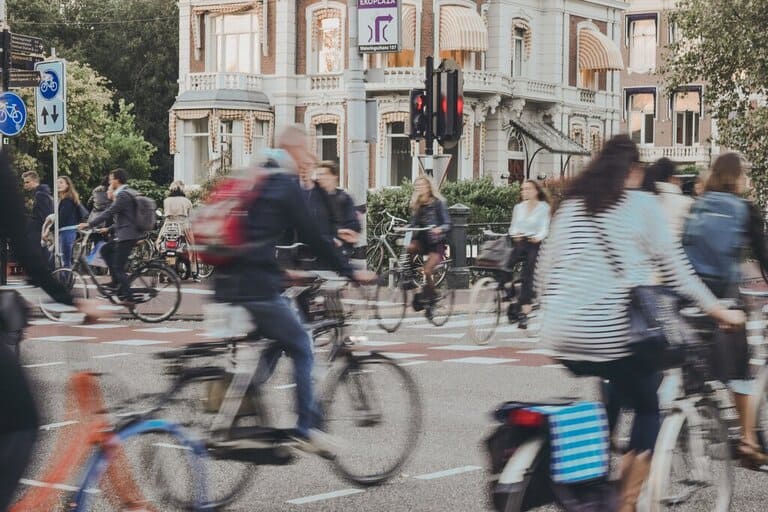
The bicycle is ingrained in Dutch culture as much as anything else is these days. This is especially apparent when you’re strolling around Amsterdam, especially during the morning or evening weekday commute. You’ve heard of rush hour, right? Well Amsterdam still has rush hour, but it’s in the bike lanes (well, there is still road traffic, as the city is not designed for cars, and it can be quite bad).
The bicycle is the main mode of transportation for the vast majority of Amsterdamers, and folks in the Netherlands in general. Just about everyone in the city has a bicycle and uses it to get around. There are more bicycles in the Netherlands than there are humans (there are about 1.1 bikes per person).
There are very few major global cities that compare to Amsterdam when it comes to the prevalence of the bicycle. That notable exception would be Copenhagen, which is also flat and centered around bike transportation. When I lived in Amsterdam I knew very few people that had a car. You just bike everywhere. That’s how it is.
Amsterdam has an extensive and impressive bike path network. The bike lanes are typically brick-red colored and they flank most roads throughout the city. They have their own stoplights and everything. It’s great!
Amsterdam wasn’t always as bike-dominated though. After WW2 the city was falling into the automobile trap like the rest of the world. But after protests over excessive deaths of children caused by vehicular accidents, the Dutch government took action in the 1970s and basically incentivized biking while disincentivizing driving. Amazingly enough, it worked, and the bike still dominates Amsterdam and the Netherlands today.
For more about the Dutch biking experience and culture be sure to check out my article on cycling in the Netherlands!
2) The Red Light District
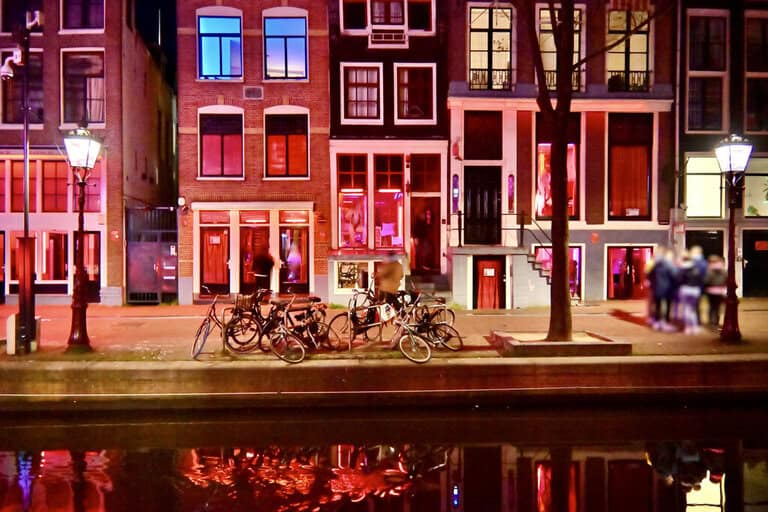
Of all the things that Amsterdam is known for, its world-known Red Light District – known locally as De Wallen – might be the most infamous. Many cities have red light districts, but none is more legendary or more visited than Amsterdam’s. The Amsterdam Red Light District is one of the city’s main tourist attractions and usually full of people that have no interest in hiring a sex worker.
The women who work in the Red Light District are typically from Eastern Europe and typically very attractive. It’s uncommon to find a Dutch woman working in a window. Rates start at 50 euros to get in the door and the rest is negotiation. A good prostitute in Amsterdam can easily bring in 2000 euros per night.
De Wallen neighborhood also features live sex theaters, peep shows, sex shops, coffee shops, and a plethora of grimy bars. It’s a must-see on any trip to Amsterdam, even if just for a moment to see what it’s all about.
For a super detailed guide to the Amsterdam Red Light District, be sure to check out my dedicated post on the subject.
3) Canals
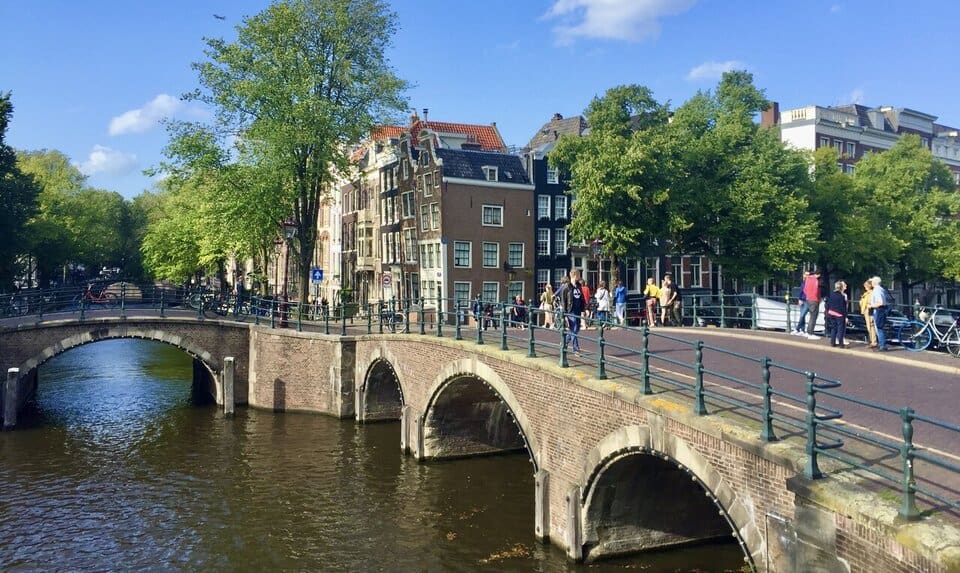
The Dutch didn’t invent canals, but they might as well have. Canals define Amsterdam and give the city its unique look. Built over the course of centuries through the Middle Ages and the Dutch Golden Age, the canals served as early fortifications as well as navigable trade routes.
Before motor vehicles the canals were the main way to quickly get around the city. Amsterdam is laid out with multiple semicircular layers of canals on top of hundreds of other intersecting canals.
Really, Amsterdam would not be Amsterdam without its canals. Every famous photo you’ve ever seen of Amsterdam has at least one visible canal. After Venice, there is probably no city in the world more synonymous with canals than Amsterdam.
4) Narrow Houses
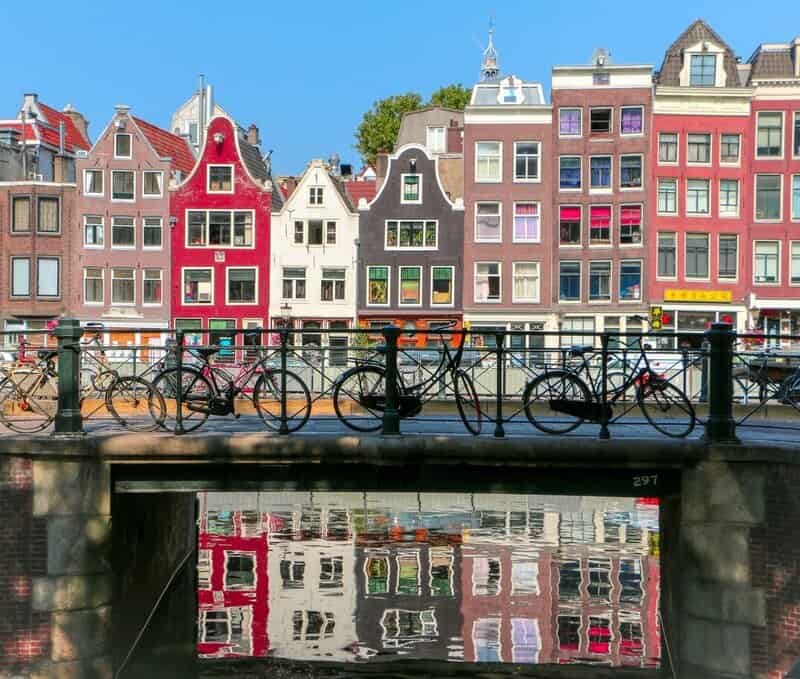
If you’ve never been to Amsterdam, one of the first things you’ll learn about the history of the city when you visit (or read this article) is why the houses on the canals are so narrow. It’s not just because it looks cool. And it sure does look cool.
No, it traces back to old ways of taxing property, which was based on linear footage of property along the street. Instead of basing it on area or volume, it was street adjacent linear distance. So the Dutch, being the clever sons of bitches they are, figured that they could build their houses as deep and tall as they could while keeping them as narrow as possible, so as to incur the minimal amount of taxes.
That’s how the city center was built and remains to this day. Most of the old row houses along the canals are 4 or more stories and many aren’t much wider than a high school hallway.
5) Anne Frank
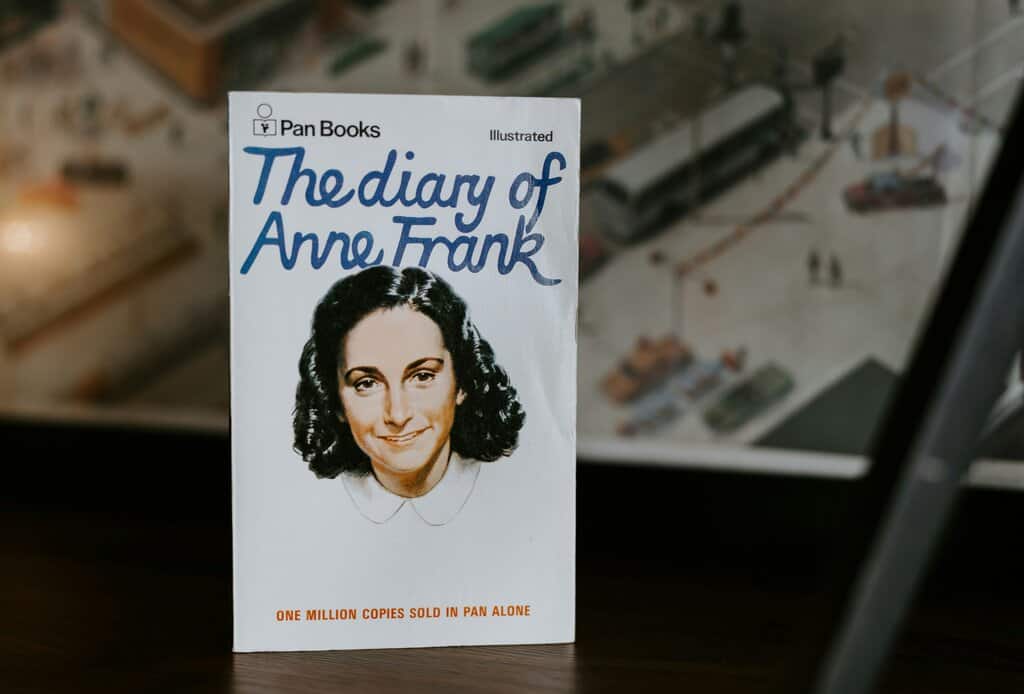
The Diary of Anne Frank is required reading for many students learning world history. It’s arguably the best daily journal of life as a Jew in Nazi occupied Northern Europe in World War II.
Anne lived in Amsterdam and spent the occupation hiding in a local resident’s house with her family. The house the Frank family hid out in is now a museum, visited by thousands of people per day. If you’d like to visit the museum, be sure to book tickets well in advance, as it has limited capacity and sells out early.
Sadly, Anne was eventually found by the Nazis and sent off to the concentration camps, where she did not survive. To this day she might be Amsterdam’s most famous resident.
6) Famous Painters

The Netherlands was home to some of the most influential painters in history. The Dutch Golden Age (1588 – 1672) brought not only global exploration and colonialism, but many famous works of art. While the painters were scattered around the country, Amsterdam was really the center of the Dutch Golden Age of painting.
The city’s relationship with art did not stop there, though. Van Gogh was well after the Golden Age and remains probably the most famous painter in Dutch history. Though Rembrant gives him a run for his money. Each painter has an entire museum dedicated to their work. On top of that you can find many other famous Dutch paintings from artists like Albert Cuyp, Johannes Vermeer, Jan Steen, and Jan van Eyck in the Rijksmuseum in Amsterdam.
7) Marijuana
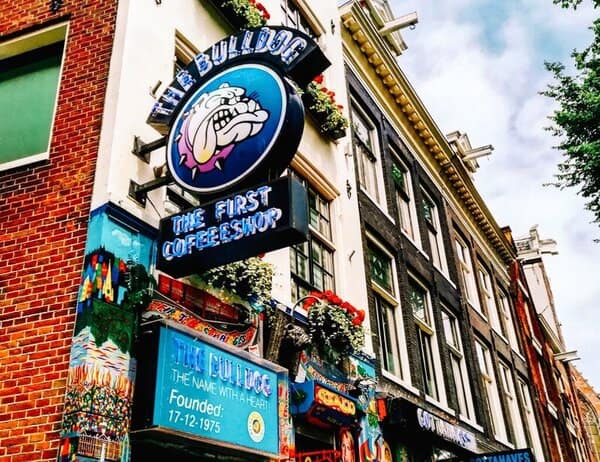
If you would have asked any 19 year old in the 2000s what Amsterdam is known for they would have said “weed and prostitutes.” It’s true, though. Amsterdam – and the Netherlands in general – is widely known for its liberal attitude on marijuana and prostitution.
Marijuana dispensaries – called “coffee shops” – are all over Amsterdam. They are a very popular tourist attraction, though locals use them too. You can simply walk into one – they are sort of like bars – and order whatever weed or edibles you want from the counter and smoke it / eat it right there.
As marijuana becomes legal in more and more countries, Amsterdam’s coffee shops are becoming less of a novelty, but they are still a staple of many tourist’s itineraries. Marijuana paraphernalia is also widely available at dozens of stores in central Amsterdam.
8) Heineken

Amsterdam is home to one of the biggest beer brands in the world: Heineken. The Dutch beer conglomerate is massive, and owns several other beer brands that it has acquired over the years, including Amstel (also originally from Amsterdam), Tiger (SE Asia), Dos Equis (Mexico), Red Stripe (Jamaica) and literally hundreds more. They even own numerous craft breweries like Lagunitas from California.
And Heineken’s reach extends to all corners of the planet. It’s available in 192 countries (that’s like just about all of them) and they brew Heineken lager all over the world as well. You can walk into just about any bar in any country in the world and order a Heineken. Think about that for a moment.
In Amsterdam, you’ll see Heineken literally everywhere. While there are many Dutch beer brands, Heineken and Amstel are the most common in the city. Many bars will have them as their only draft options. If you go to an event you’ll likely be served Heineken. If you fly KLM you’ll have no other beer option. Heineken pretty much owns Amsterdam.
If you’re keen for some better tasting beer on your visit to Amsterdam, though, be sure to check out my guide to Amsterdam’s brewery scene.
9) Being Flat and Under Sea Level
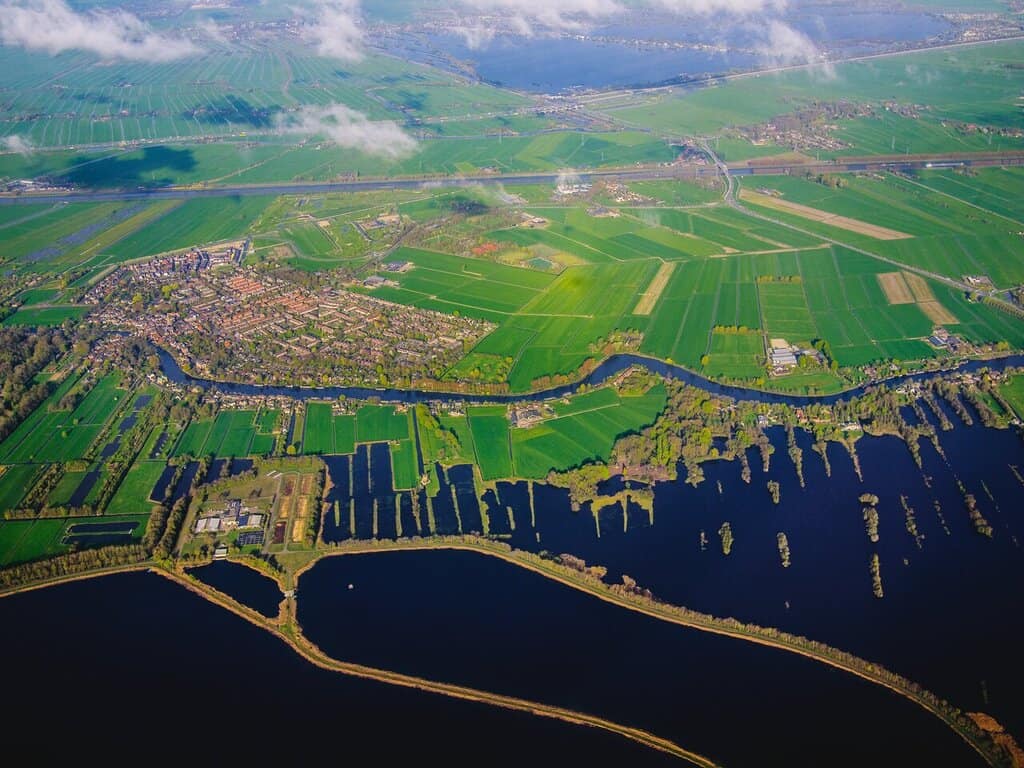
The Netherlands is famously flat. Outside of the Limburg province in the southern part of the country, you literally will not find a hill in the entire country. The country is so flat due to its location as a river delta for the Reine and some other major European rivers. This also causes much of the country, including Amsterdam, to be under sea level.
So as you walk around Amsterdam – a city which is literally named after damming a river – you’ll feel how flat and low it is. It’s great for older folks and those who struggle with hills, as they can walk comfortably around the city.
If you’re worried that rising sea levels might endanger Amsterdam in the coming decades, I wouldn’t be too concerned. The Dutch are master civil engineers and if any city is prepared to fight rising sea levels, it’s Amsterdam. I have faith that the Dutch ingenuity will protect the city for years to come!
10) Literally (almost) Everyone Speaks English

The rate of English fluency in the Netherlands is better than many English speaking nations. Estimates for English proficiency range from about 90-93%. In small villages it’s more common to find people who don’t speak English, but in Amsterdam it’s rare to come across someone you won’t be able to have at least a basic conversation with.
Any ethnically Dutch person in Amsterdam will be fluent in English. It’s required learning in schools from a young age. Where you’ll find the most struggles with English will actually be the Asian, African and Middle Eastern immigrant communities in Amsterdam.
These folks were pushed to learn Dutch when they immigrated instead of English, which makes sense. When I lived in East Amsterdam the guy who cut my hair didn’t speak any English, only Dutch and Arabic. The lady at the Chinese restaurant I used to frequent also spoke very limited broken English.
There are also people who speak enough English but aren’t necessarily fluent. They’re often not super comfortable explaining stuff to you but can have a decent conversation. Either way, as a tourist to Amsterdam you won’t ever have a communication problem so long as you speak English.
11) Having a Strong Expat Community

Amsterdam is an international city with a large immigrant population. This has sort of been a testy topic recently with long-time residents who feel they are losing their city to expats and immigrants. But the city is showing no signs of restricting highly skilled migrant workers, and this has led to a large and strong expat community.
Amsterdam is a popular destination for expats thanks to its unique culture, tax incentives for foreign workers, and availability of English speaking jobs. As an expat in Amsterdam you’ll make friends from all around the world. It’s truly a great place to call home as an immigrant.
If you’re interested in living in Amsterdam as an expat then be sure to check out my detailed list of the pros and cons of living in Amsterdam.
12) Epic Nightlife

Amsterdam is sort of notorious for being a party city (a perception that the city government and tourism bureau really want to change). Nightclubs stay open all night and blast loud techno music until the morning light. Daytime is full of music festivals (by this I mean DJs, not bands). Not to mention the thousands of bars and restaurants scattered around the city. It’s a nonstop party.
If you’re coming to Amsterdam to party, just be sure to be respectful to the locals. Don’t piss in the canals and scream at the top of your lungs waking down the narrow streets at 4 AM. You can have a great time in the city so long as you don’t be a moron!
13) House Music and Festivals
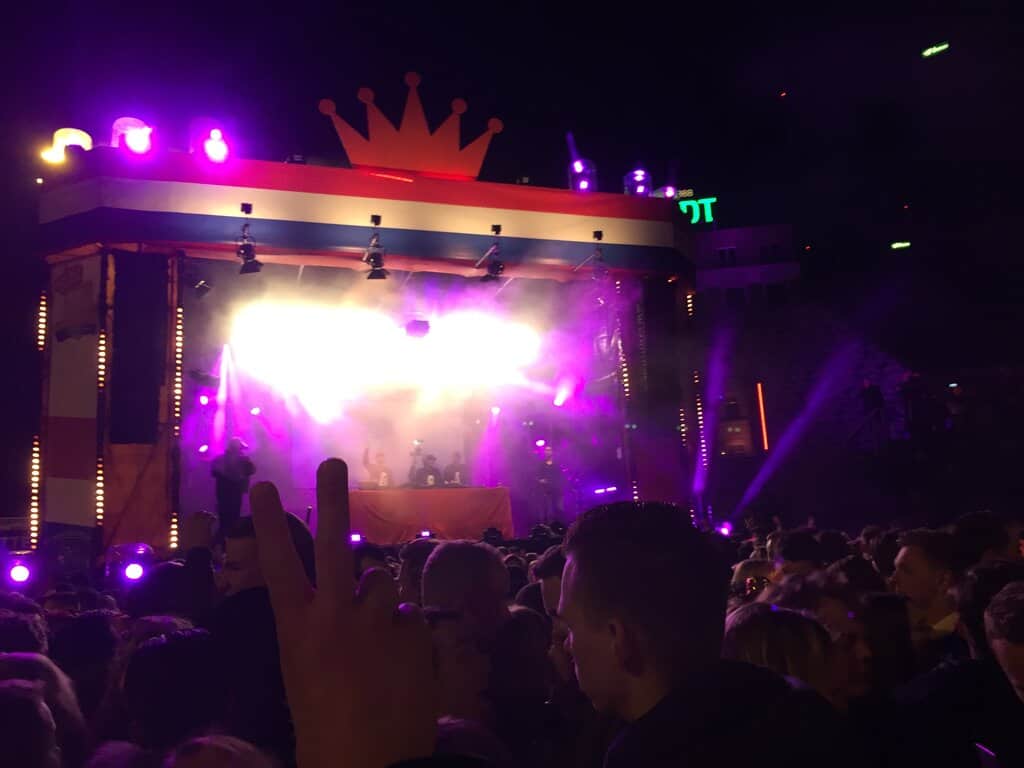
Speaking of music festivals, let’s get into that a little more. For whatever reason, the Dutch breed DJs like they were an agricultural export. House music (aka DJs) is king in the Netherlands and it’s as ingrained into Dutch society these days as cheese and bike lanes.
The Dutch pioneered modern electronic music and DJs still completely dominate the Dutch music scene. Some of the most successful DJs ever, like Armin van Buren, Tiësto and Martin Garrix hail from the Netherlands. If you walk into a bar in Amsterdam you’ll be hard pressed to find a live band playing, but finding a DJ performing is like finding a pickup truck on a highway in Texas.
Many DJs perform at summer music festivals in and around Amsterdam. These are basically events where multiple DJs perform while the crowd bobs their heads and drinks. There is at least one every weekend day in Amsterdam in the summer months and some outside summer too. They are put on by different event organizers, but unless you really know your house music they all seem pretty much the same.
Either way, Amsterdam is house music and DJs. That’s just how it is. If you want to see a band, better head to an Irish pub.
14) Ajax Football Club
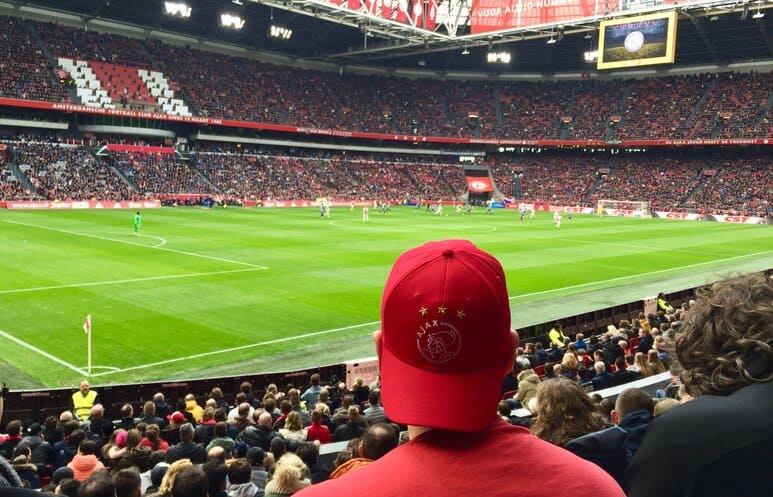
Amsterdam is home to one of the most storied clubs in European football. Ajax FC is the most historically successful club in the Dutch eredivisie (basically the Dutch premier league) and until about 2022 – when its coach left for Manchester United – they routinely made the knockout round of the UEFA Champions League.
Ajax made the semifinals in 2019 and won the Champions League in 1995, as well as 1971, 1972, and 1973, when it was known as the European Cup. Historically, they’ve been able to hold their own against powerhouses like Liverpool, Real Madrid, and Bayern Munich.
Now, as I said, in 2022 things sorta went haywire for Ajax when their coach left and took all their star players with him. They’ve been struggling to regain strength ever since. They’ll get there again one day I’m sure.
So if you’re a football fan, catching an Ajax match is a great thing to do when you’re in Amsterdam to really feel like a local and not just a tourist.
15) KLM Airlines
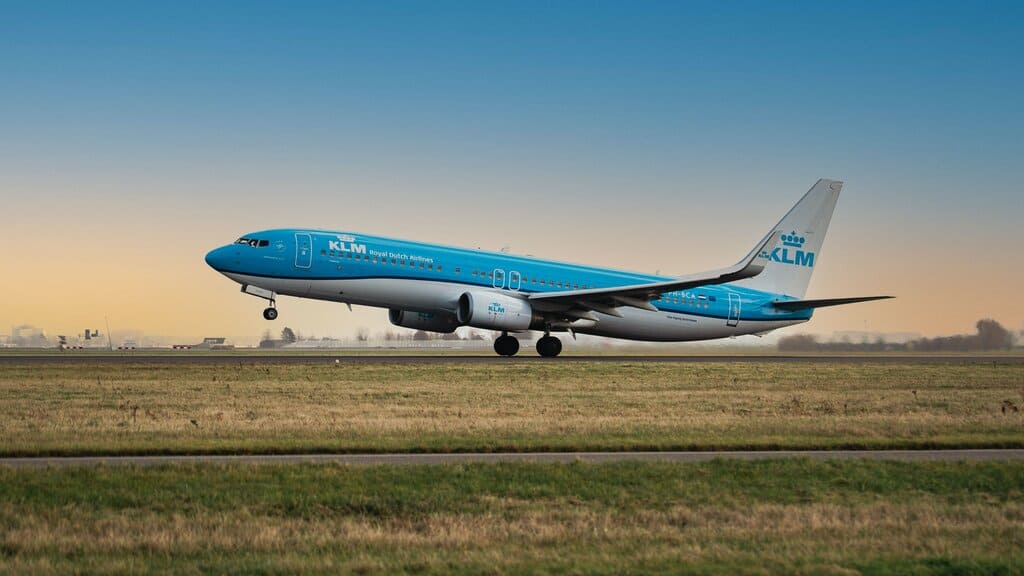
Amsterdam Schiphol Airport is home to KLM, the Dutch national carrier and one of the largest airlines in Europe. Even if you’ve never been to the Netherlands before you’ve likely seen the blue and white KLM planes somewhere around the world.
KLM stands for Koninklijk Luchtvaart Maatschappij, which means “Royal aviation company”. Ironically, nothing in the name signifies that it’s a Dutch airline. It’s just sort of known. That might be because back in 1919 when it was founded the world wasn’t quite as connected as it is these days, and they probably didn’t imagine it would become such a large global airline.
KLM is actually the oldest continuously operating airline in the world. It also owns low cost carrier Transavia, which operates hundreds of flights from Dutch airports to all over Europe, North Africa, and the Middle East.
Basically, KLM is huge and if you live in Amsterdam there is no way not to fly them or their subsidiaries.
16) Impeccable Public Transportation
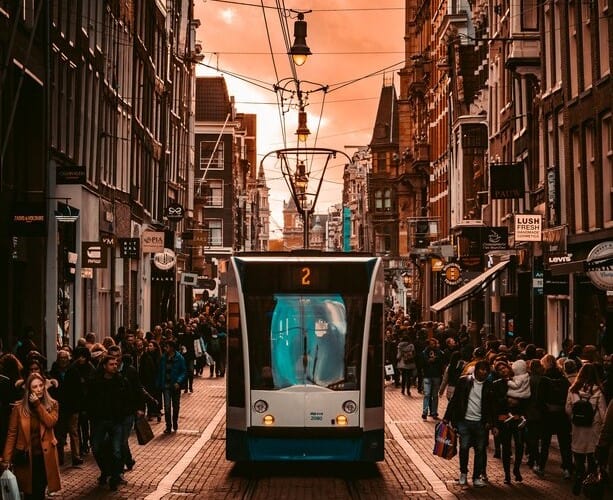
Amsterdam’s public transportation network is top of the line. While it might not be the London Underground, between the trains, metro, trams, buses, and ferries you can get literally anywhere in and around the city and not have to walk more than a few blocks.
All public transportation in the Netherlands runs on the same payment system. So as long as you have your OV Chipkaart you can ride anywhere (ferries in Amsterdam are free). Amsterdam Schiphol Airport is a 15 minute train ride from Amsterdam Central Station, and you can get to Rotterdam in just over a half hour on the express train.
It’s hard to overstate how great it is to have such amazing public transportation. As an American I appreciate it even more. It’s also very affordable (this isn’t Switzerland). Definitely make use of the great public transportation network when you’re in Amsterdam!
17) Being a Flat Out Beautiful City

Lastly, let’s not forget that Amsterdam is internationally recognized as one of the most flat out beautiful cities in the world. While the Netherlands was not blessed with any natural beauty (like literally none), the Dutch didn’t let that stop them from designing stunning cities and towns.
Amsterdam is unique in its combination of canals, Flemish architecture, and colorful houses. There’s really nothing else like it in the world on the same scale (Bruges in Belgium is similar on a smaller scale).
Everyone who visits the Dutch capital is impressed with the beauty of the city and the majesty of the canals. Be sure to take a few moments just to sit and enjoy it!
Where to Stay in Amsterdam
There is an endless list of hotel and guesthouse options in Amsterdam. Deciding on a place to stay is a task in itself. It depends on what type of traveler you are, what your budget is, and how much you want to walk or take public transportation.
Hotels in Amsterdam are not cheap, and every year they get more and more overpriced. It’s one of the most visited cities in the world and the hotel prices reflect that. Don’t you just love supply and demand?
If you want to save a few bucks and still stay at a nice place, consider staying by Sloterdijk train station, especially the Mercure Sloterdijk. Just 5 minutes away by train, the hotel prices in the Sloterdijk area are much more reasonable and it’s super easy to get into the city center.
I’ve given a few other options below. Just keep in mind that “budget” in Amsterdam is in the same price range as upscale somewhere like India or Cambodia.
Where to Stay in Amsterdam:
Budget: The Flying Pig Hostel
Affordable: Mercure Sloterdijk
Mid-range: The Hendrick’s Hotel
Luxury: Andaz Amsterdam
